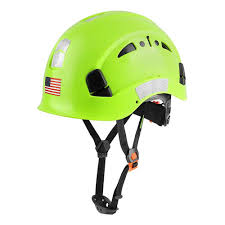Top Suppliers for Protective and Safety Clothing Solutions
Safety Clothing Suppliers Ensuring Workplace Protection
In today’s dynamic work environment, the importance of safety has taken center stage. Whether it’s a construction site, a manufacturing facility, or an outdoor service industry, the role of safety clothing cannot be overstated. Suppliers of safety clothing are integral in providing the necessary protective gear that ensures the well-being of workers across various sectors. This article delves into the significance of safety clothing suppliers, the types of safety gear they offer, and the factors to consider when choosing a supplier.
The Importance of Safety Clothing
Safety clothing, often referred to as Personal Protective Equipment (PPE), includes garments designed to protect workers from various hazards. These hazards can be anything from chemical spills to physical impacts, extreme temperatures, and electrical risks. The right safety clothing plays a critical role in minimizing the risk of injuries and fatalities in high-risk environments.
Employers are legally obligated to provide suitable PPE and comply with occupational safety regulations. This regulatory framework emphasizes the need for high-quality safety clothing, which includes factors such as durability, comfort, and compliance with safety standards. This is where safety clothing suppliers come into the picture, bridging the gap between manufacturers and end-users.
Types of Safety Clothing
Safety clothing suppliers offer a wide array of products tailored to different industries and their specific needs. Some of the most common types of safety clothing include
1. High-Visibility Clothing Commonly used in construction and roadside work, high-visibility apparel ensures that workers are clearly seen, even in low light conditions. These include vests, jackets, and trousers made with bright colors and reflective materials.
2. Flame-Resistant Clothing Essential for industries where heat or flames are a constant risk, flame-resistant clothing protects workers from burns and is often required in sectors like oil and gas.
3. Chemical-Resistant Gear Workers exposed to hazardous chemicals need specially designed clothing to prevent skin contact. This category includes coveralls, gloves, and aprons made from materials resistant to corrosive substances.
4. Protective Footwear Safety shoes and boots are a must-have in many industries. They not only provide comfort but also protect against slips, punctures, and falling objects.
safety clothing suppliers

6. Heat- and Cold-Weather Gear Appropriate clothing for extreme weather conditions ensures that workers remain safe and productive, preventing conditions like hypothermia or heatstroke.
Choosing a Safety Clothing Supplier
When selecting a safety clothing supplier, several factors should be taken into account
1. Product Range A supplier should offer a comprehensive selection of PPE to meet the varied needs of your workforce.
2. Quality and Compliance Look for suppliers whose products meet industry standards and regulations.
3. Customization Options Many businesses prefer customized safety gear featuring their logos or specific designs. A flexible supplier can accommodate these requests.
4. Customer Service Reliable suppliers should provide exceptional customer service, offering guidance and support in selecting the right products.
5. Pricing and Availability Competitive pricing is essential, but quality should not be compromised. Additionally, a supplier should have good stock availability to prevent delays in procurement.
Conclusion
In conclusion, safety clothing suppliers play a vital role in ensuring that workers have access to necessary protective gear. By providing a diverse range of high-quality safety clothing, these suppliers help businesses maintain safe working environments, comply with regulations, and ultimately protect their most valuable asset—their employees. For any organization concerned about workplace safety, partnering with a reputable safety clothing supplier is not just a choice; it’s a necessity.
-
Top AI Safety Clothing with GPT-4 Turbo | Smart Protection
NewsJul.31,2025
-
Face Shield Safety Helmet with GPT-4 Turbo AI Safety
NewsJul.31,2025
-
CE Working Clothing for Construction & Welding Safety
NewsJul.30,2025
-
Premium Safety Helmet with Visor for Construction & Industrial Use
NewsJul.29,2025
-
High-Quality CE Working Clothing for Safety and Construction
NewsJul.29,2025
-
Premium Safety Helmet Hat with Ear Defenders, Brim & Soft Design
NewsJul.29,2025
